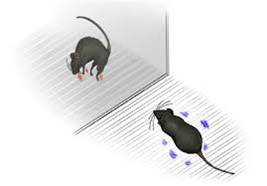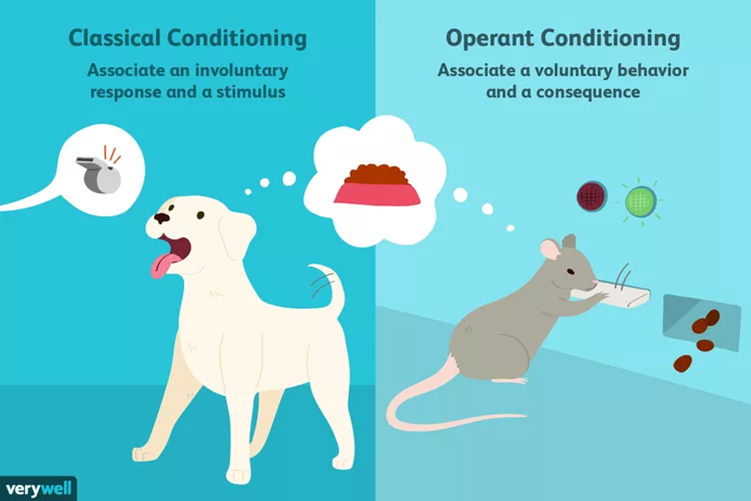Fear
Fear is a strongly unpleasant emotion, felt towards a known or perceived threat, or danger. It acts in an anticipatory way, eliciting physical and psychological responses from an individual in preparation of a plausible painful stimulus. As an innate reaction, theoretically every individual can experience it, although the intensity varies depending on multiple factors.
Observational fear conditioning
The act of acquiring fear through vicarious stimuli, or more simply visual stimuli. Observational fear was firstly documented approximately 60 years ago, and highlight the possibility for indirect fear conditioning of the subject. The main unit for quantifying fear is the behavioural reaction known as freezing.

Operant fear conditioning
Acquisition of a fear stimulus through repeated operant training or action. Contrary to the classical conditioning, which uses an innate behaviour as response, operant condition works by interacting on the environment. Through the interaction you can decide to increase the operant response or decrease it. The unit is a ratio, which decreases in operant fear conditioning studies. This becomes Suppression ratio.

Aims
The study aimed at characterising observational fear in rats, to have a tool for molecular analysis, by the means of two ways of evaluating fear: increase in freezing behaviour and suppression ratio.
For the freezing behaviour, it was interesting to analyse the array of behaviours displayed by rats during the observational fear experiment. Specifically, during the conditioning stimulus and in the minute after. Blood was also collected to report the physiological stress dispaly of the subject.
For the suppression ratio, injections of diazepam were used to validate the method, by avoiding a total suppression in operant behaviour from the subjects.